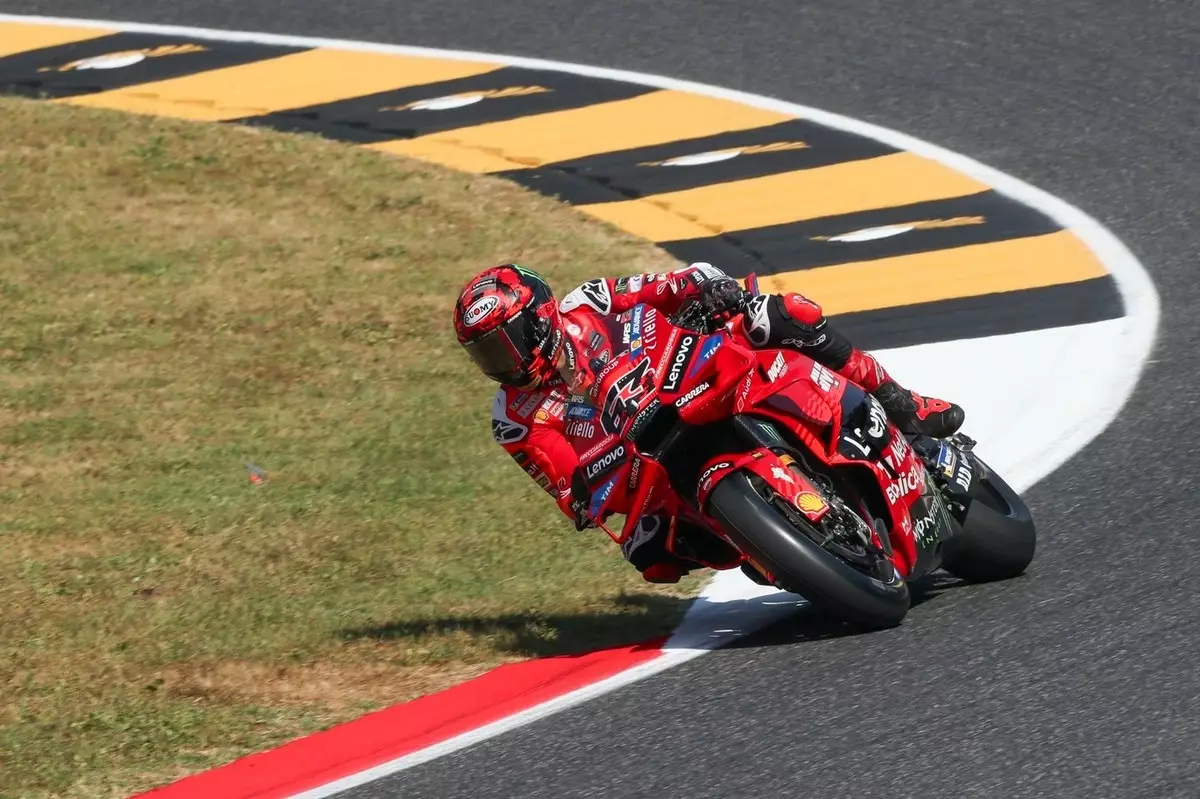In the fast-paced world of MotoGP, technological evolution is as essential as raw talent. Each weekend brings discussions surrounding performance enhancements, and the recent focus has been on braking systems. The Italian Grand Prix at Mugello spotlights how critical brake specifications influence race outcomes. Francesco Bagnaia’s transition to a larger brake disc in Aragon has ignited debates on its effectiveness, but as with all advances, there are nuances that can’t be ignored. This focus on expanding disc sizes may promise improved handling, but it presents a balancing act filled with trade-offs that could impact overall performance.
Weight vs. Performance: The Brake Dichotomy
The discourse surrounding brake upgrades often presents a binary view of either enhancing speed or suffering compromises in weight. The renowned Brembo technician Andrea Pellegrini brings a practical lens to this conversation by discussing Bagnaia’s choice to utilize a 340mm disc at Mugello rather than bolding leap into a 355mm configuration. The reduced energy demand at Mugello diminishes the urgency for a heavier disc. Indeed, a larger disc can amplify braking performance, but it also adds weight, which could negate the advantages gained elsewhere. This duality of braking technology becomes evident as teams must weigh the benefits against the potential drawbacks that could influence handling and speed over a full race distance.
The Temperature Tightrope
One of the often-underestimated aspects of braking technology is temperature management, especially given the diverse demands of various tracks. Pellegrini emphasized the criticality of maintaining optimal temperatures for brake discs. Insufficiently warm components lead to diminished stopping power, and warming larger discs — such as the proposed 355mm model — necessitates the addition of weighty covers. This creates a domino effect where increased braking capability can paradoxically result in slower lap times if the temperature isn’t carefully managed. So, while larger discs may enhance bite once warmed, the process of heating them adds varying levels of complexity for teams.
A Tailored Approach
Different racetracks come with their unique challenges, requiring tailored approaches to braking strategies. The situation at Mugello is a classic example of how fixed assumptions can lead to flawed decision-making. Just because Bagnaia experienced positive outcomes with the 355mm disc in a high-energy circuit like Aragon does not mean it will translate seamlessly to Mugello. Each track requires a disciplined evaluation of how the bike’s braking system can be optimized to match not just the technical demands of the circuit but also the rider’s style and the bike’s configuration.
The continuous dialogue around brake technologies reveals the deeper narrative of innovation within MotoGP. Breakthroughs in performance will always require a nuanced understanding of how each modification impacts a bike’s overall dynamics on the track. As teams like Ducati navigate these complex terrains, it becomes clear that there isn’t a one-size-fits-all approach to success in racing. The path to optimization is paved with research, experimentation, and an unwavering commitment to advancing both technology and performance on the asphalt. The engagement in discussions surrounding brakes is a testament to MotoGP’s relentless pursuit of excellence, where every detail matters.


Leave a Reply